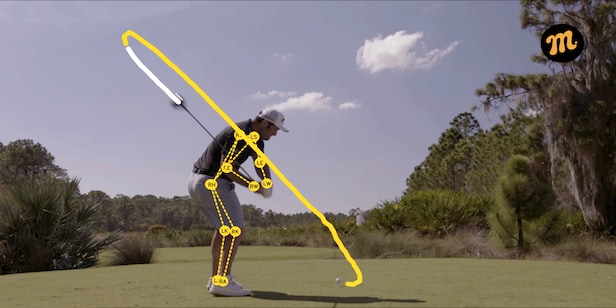How well do you know the World Handicap System? Take our quiz to find out – Australian Golf Digest

- by Admin
- April 16, 2024

As of Monday (April 15), every state in the U.S. is officially in “posting season” for handicap scores, so now is probably a good time to brush up your knowledge of how the relatively new (since 2020) World Handicap System works. In fact, on Jan. 1, the WHS was updated to reflect all the data that has been captured since its initial roll out. The latest version of the system has been altered to better identify your playing ability and make any events you’re competing in more equitable.
Sparked by the pandemic and a resurgence of golf-course construction, you might be interested to learn that there are now more than 3.5 million golfers in the U.S. who have an official Handicap Index. That’s a roughly 35-percent increase in three years, so your chances of going head-to-head against another card-carrying member of the Golfers Handicap Information Network (GHIN) are pretty good.
So what do you really know about the WHS and how it is designed? Questions arise from time to time from everyday golfers who are sometimes caught off guard by the upward or downward movement of their Index. With that in mind, we asked Dean Knuth, the prime developer of the USGA’s Course Rating and Slope Rating system, and Steve Edmondson, the USGA’s current managing director of handicapping and course rating, to come up with a 12-question quiz to test your knowledge—and perhaps help you become more familiar with the system’s intricacies.
Up for the challenge? Questions (and answers) below.
More From Golf Digest a win for the good guys How to catch a sandbagger  Problem Solving My solution for ranking pro golfers might be crazy enough to work
Problem Solving My solution for ranking pro golfers might be crazy enough to work  Penalty or No Penalty? Rules of Golf Review: Can you pass our 10-question pop quiz? Questions 1. What is a Handicap Index?
Penalty or No Penalty? Rules of Golf Review: Can you pass our 10-question pop quiz? Questions 1. What is a Handicap Index?
a) A portable value that represents a golfer’s demonstrated playing abilityb) The number of strokes needed to play to parc) The number of strokes needed to play to the Course Ratingd) A golfer’s average score for an 18-hole round
2. How many scores are used in my handicap record?
a) 10b) 8c) 20d) 5
3. For golfers with a Handicap Index, what is the maximum hole score for handicap purposes?
a) The max is always double parb) The max is net double bogeyc) There is no max and the gross score must be recordedd) The max is always an 8 for a par 5, a 7 for a par 4 and a 6 for a par 3
4. For players with a course handicap of 18, if they score a 9 on a par 3, what score would they post for that hole?
a) 5b) 9c) 7d) 6
5. How many 18-hole scores must be posted to establish a Handicap Index?
a) 20b) 5c) 3d) 8
6. On the 10th hole of individual match, you hole out to win the hole, so your opponent scoops up his ball on the putting green as he has lost the hole. What must your opponent record for handicap purposes?
a) Net double bogeyb) Most likely scorec) The score can’t be recorded for handicap purposesd) One more stroke than what his ball lied at the time of the hole out
7. Your Course Handicap for the tees you’re playing is 16, and you’re playing a match against a player who is a 10 from his tees. Where do you receive strokes?
a) On the 16 hardest holesb) On holes one through 16c) On the 10 holes handicapped on the scorecard one through 10d) On the six holes handicapped on the scoredcard one through six

Reg Charity
8. What is the maximum Handicap Index?
a) 54b) 36c) There is no maximumd) Depends on the golfer’s gender
9. You lost a match 4 and 3 and only played 15 holes. What do you post on holes 16, 17 and 18?
a) Your most likely scoreb) Par plus any handicap strokes you would have receivedc) You can’t post match-play scores to determine a Handicap Indexd) Net double bogey
10. What does a Course Rating represent?
a) How hard a course plays for the typical bogey golferb) Your expected score if you subtract your Course Handicap from your actual scorec) The playing difficulty of a course for a golfer with a 0 Indexd) What even par should be for that course
11. You only have time to play nine holes, how will that round impact your Index?
a) You have to post it and wait until you play another nine-hole round to post it as an 18-hole scoreb) Nine-hole rounds do not factor into your official Handicap Indexc) You post your nine-hole round and a scoring formula determines what your 18-hole score would be d) You apply a score of net par to the remaining nine holes to determine your 18-hole score
12. On family vacation, you take the kids to play an 18-hole par-3 course (2,250 yards from the tips). Can you post this round?
a) Yes, assuming it has a Course Rating. All rounds played on 18-hole courses of 1,500 yards or longer are eligibleb) No. The minmium length for a course to where handicap rounds are posted is 4,000 yardsc) No. Par-3 courses can’t have a Course Ratingd) Yes, but you can’t post any score higher than net bogey
Answers
1. (a); 2. (c) The latest 20 scores are used and the best eight “differentials” calculate the Handicap Index. Differentials are correct scores for the Course Rating and Slope Rating of the tees that you played; 3. (b); 4. (d) The maximum hole score under Equitable Stroke Control is net double bogey, so record a 6 (5 plus the handicap stroke equals six). Note: Turn-in your actual hole scores in tournaments; 5. (c); 6. (b) But not to exceed net double bogey; 7. (d); 8. (a) Under the old system used by the USGA, a player’s gender did determine max handicap (36.4 for men and 40.4 for women); 9. (b) Example: If you have a course handicap of 18, you would record a bogey for each of the three remaining holes; 10. (c) Course rating applies to “expert” golfers while a Slope Rating is computed from the difference between the Bogey Rating (Bogey golfer’s expected score) and the Course Rating. Slope is meant to predict how fast scores go up as the handicap goes up, so that handicaps are portable from course to course. 11. (c) This is one of the new changes to the WHS effective Jan. 1. 12. (a) Also a new change for this year, 18-hole courses 1,500 yards are longer are eligible for a Course Rating. Nine-hole courses only need be 750 yards.
This article was originally published on golfdigest.com
The Latest News
-
December 22, 2024Australian cricket team at MCG: Near 60% win record, unbeaten for three years | Cricket News – Times of India
-
December 22, 2024Zheng to skip United Cup, focus on Aussie Open
-
December 22, 20242024 runner-up Qinwen Zheng pulls out of Australian Open lead-in event
-
December 22, 2024Cricket Australia ‘disgraced’ by fans after ’embarrassing’ BBL visual; Sam Konstas flops before potential debut vs India
-
December 22, 2024‘I want to be out there’: Webster’s long wait for Test debut could be over with Marsh’s all-round capability clouded





